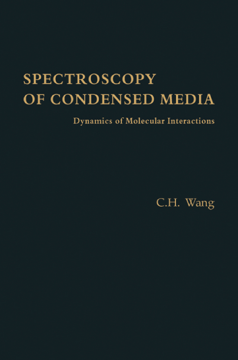
Additional Information
Book Details
Abstract
Spectroscopy of Condensed Media: Dynamics of Molecular Interactions discusses the use of molecular spectroscopy (including nuclear magnetic resonance [NMR] and nonlinear optical spectroscopy) in dynamic processes in condensed molecular systems. The book reviews relationship between transition probability and the time-correlation function of an isotropic electric dipole system, linear-response theory, and light scattering resulting from the translational motion of molecules in fluids. The text describes molecular rotation, theories of angular momentum, nuclear magnetic resonance, and spontaneous and coherent Raman effects. Closely related with the Raman and Brillouin scattering are vibrational dephasing, relaxation processes, and dynamics of phase transition solids. The book highlights the advantages of using NMR and also explains the basic concepts, such as local field, spin temperature, and effective Hamiltonians, that are employed in interpreting NMR experiments. The investigator can use nonlinear optical spectroscopy to study condensed matter. The text also cites two methods in which the investigator can control the time-dependent average Hamiltonian by (1) manipulating the intensity, timing, phase of the pulses, or (2) by sample spinning. The book is intended for advanced graduate students in physical chemistry that will equally benefit both investigators and scientists involved in physics research.
